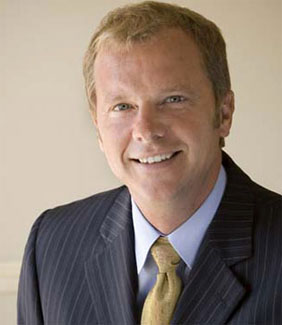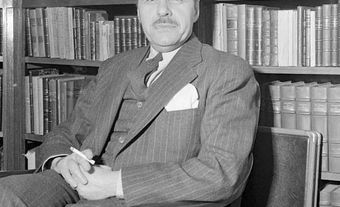
Founding
Canada’s western provinces have a long history of founding new political parties, including (on the right of the political spectrum) the Social Credit Party and the Reform Party, and (on the left) the Co-operative Commonwealth Federation (CCF), which would become the NDP. That tradition of political innovation continued in Saskatchewan in 1997, when various Liberals and Progressive Conservatives (PCs) left their defeated provincial parties to found the Saskatchewan Party.
The Liberals and PCs were each badly beaten in the 1991 election that brought the NDP to power under Roy Romanow. The Liberals became mired in internal dissent. The PCs — who had governed under Premier Grant Devine for nine years — were swept from office, having become deeply unpopular after years of budget deficits and allegations of corruption. In the following years, several members of the Devine government would be convicted of fraud and of misusing their legislative expense allowances. The scandal buried hopes of a PC revival, or return to power, anytime soon.
Amid this backdrop, a coalition of PCs and Liberals emerged on 8 August 1997 to form the Saskatchewan Party. The project was largely the work of political organizers acting behind the scenes. However, the party was also represented in the provincial legislature by four Liberal and four PC MLAs, who banded together in a new caucus under the interim leadership of former Liberal Ken Krawetz. Weeks later, the Saskatchewan Party caucus was officially designated the province’s official opposition.
Neither the Liberal nor the PC parties disbanded. However, the PCs agreed to suspend political activities and to not compete with the Saskatchewan Party for the next two elections — running only a handful of “paper” candidates in each election to remain a legal party under provincial rules.
Elwin Hermanson
The new party held its first leadership convention in April 1998. Rather than a delegated convention, in which delegates are chosen from party riding associations to elect the leader, the party opted for a one-member-one-vote system. Elwin Hermanson, a former Reform Party Member of Parliament who had lost his seat in the 1997 federal election, was chosen as leader.
Under Hermanson, the Saskatchewan Party articulated the values of the Reform Party and the political right: it advocated deep tax cuts, individual self-reliance and limited government involvement in the economy. It supported the privatization of Saskatchewan’s much-prized Crown corporations, as well as the introduction of private surgical clinics, and sending young offenders to boot camp. The more centrist values of the former Liberals who helped found the party were not evident in its policies and pronouncements.
The party became popular in rural Saskatchewan, but failed to win over urban voters, especially government bureaucrats and Crown corporation employees in Saskatoon and Regina. Meanwhile, NDP Premier Roy Romanow attacked the Saskatchewan Party as merely a re-branded front for the widely discredited PCs, calling the new group the “Saska-Tories” (see Tory). His attacks were only partly successful. In the 1999 election, the Saskatchewan Party captured 25 out of 58 seats, reducing the Romanow regime to a minority government of 29 seats. Despite its progress, all the Saskatchewan Party seats were rural ones; it did not elect a single member from the province’s cities.
Hermanson tried to moderate his party’s social-conservative image in the hopes of winning more urban votes. In the 2003 election, despite small inroads in Saskatoon, the party was returned again to the opposition benches, while the NDP won a narrow majority government under the new premier, Lorne Calvert.
Brad Wall
In 2004, Hermanson resigned and Brad Wall, a former PC organizer and a Saskatchewan Party MLA from Swift Current, was unanimously acclaimed as the new leader. Wall positioned himself as a moderate and led both a rebranding effort and a sweeping overhaul of Saskatchewan Party policy. Party members, citizens and experts were widely consulted. The party encouraged the return of Saskatchewan expatriates working in Alberta, and put business investment and jobs growth at the center of its agenda. At the same time, the narrow social conservative goals of certain party members — for example, to restrict abortion – were sternly discouraged, as Wall tried to present a more modern, centrist face to voters, especially younger urban voters.

These strategies paid off. In the 2007 election, Wall led the party to a majority government victory, winning 51 per cent of the popular vote and 38 seats to the NDP’s 20. Although its support was still mainly rural, the Saskatchewan Party elected four members in Saskatoon and Regina.
The party took power at a fortunate time, during an unprecedented global commodities boom (see Commodity Trading). Rising prices and demand for Saskatchewan’s potash, uranium, oil and farm products boosted jobs and filled government coffers, transforming the once-poor province into an economic success story. In the 2011 election, the party was returned to power with 64.2 per cent of the popular vote — the highest in Saskatchewan history — along with 49 of 58 legislature seats.
The party was embroiled at this time in a long-running legal dispute with PC Party loyalists over the ownership of a $3 million political trust fund. PC members, wanting to use the money to revive their party, successfully fought the Saskatchewan Party in court, eventually winning control of the fund in 2014.
The outcome of the dispute had no obvious impact on Saskatchewan Party fortunes. Neither did the sudden end, in 2015, of the global commodities boom. In the 2016 election — despite declining economic fortunes and the return of budget deficits — the Saskatchewan Party won a third consecutive majority, with 51 of 61 seats. The win confirmed both the party’s competitive edge, and Brad Wall’s dominance, in modern Saskatchewan politics.
Scott Moe
By 2016 — following the defeat of a string of other conservative governments across the country, both provincial and federal — the Saskatchewan Party was (along with newly elected Progressive Conservative government in Manitoba) one of only two avowedly right-wing governments in Canada.
On 10 August 2017, Brad Wall announced he would retire as premier as soon as his party chose a new leader. On 27 January 2018, Scott Moe, who served in Wall’s executive council (or Cabinet) from 2014–17, was elected leader of the Saskatchewan Party. He was sworn in as premier on 2 February 2018.

 Share on Facebook
Share on Facebook Share on X
Share on X Share by Email
Share by Email Share on Google Classroom
Share on Google Classroom
